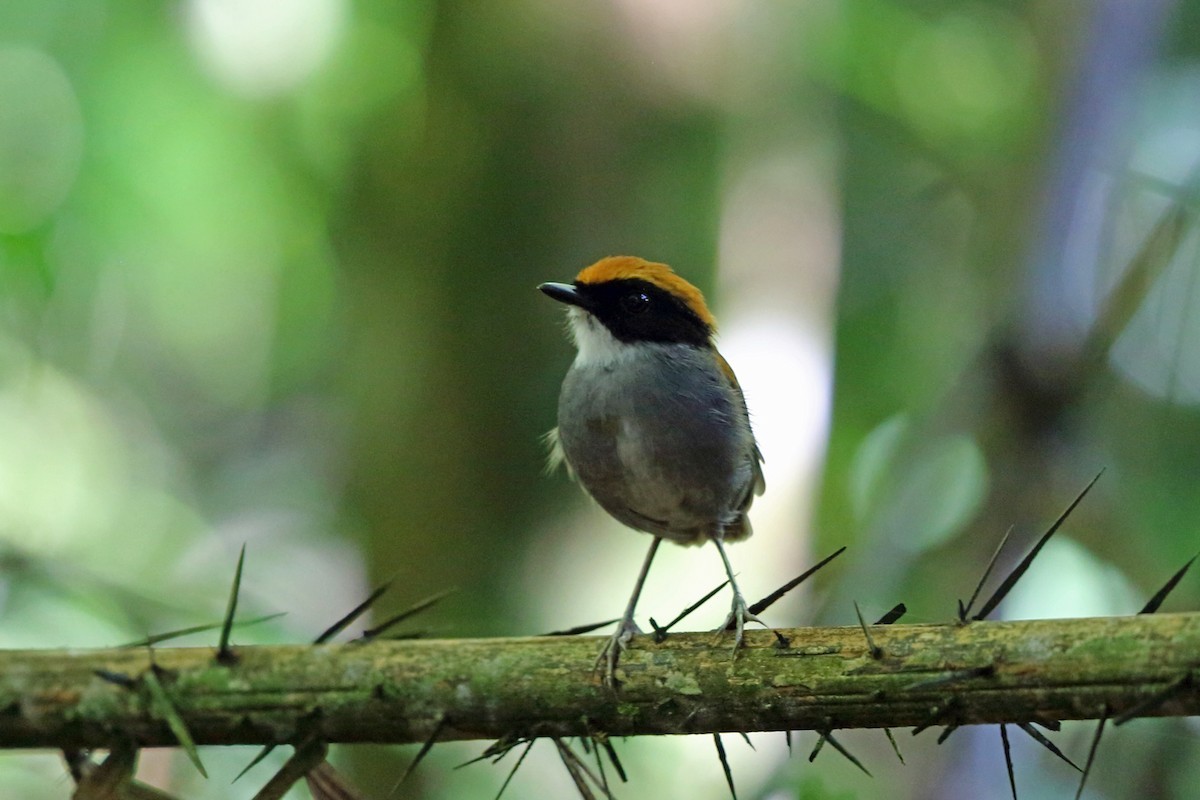Black-cheeked Gnateater
A species of Gnateaters Scientific name : Conopophaga melanops Genus : Gnateaters
Black-cheeked Gnateater, A species of Gnateaters
Botanical name: Conopophaga melanops
Genus: Gnateaters
Content
Description General Info
 Photo By Nigel Voaden
Photo By Nigel Voaden Description
Measuring 11.5 cm (4.5 in), the black-cheeked gnateater is a small round bird with a short tail. It exhibits sexual dimorphism, as the male has distinctive coloured plumage and the female is a more overall brown in color. The male has a black face and cheeks with a contrasting orange crown and white throat. The upperparts are brownish and the underparts pale grey, the belly feathers more white and the flanks tending to buff. The female is more brown above with a white eyebrow and buff patch on the wings. It resembles the rufous gnateater. 
Size
12 cm
Nest Placement
Ground
Feeding Habits
Black-cheeked Gnateater primarily consumes small arthropods. They forage for food on or close to the ground by gleaning from foliage and sifting through leaf litter, employing short reaches to capture their prey.
Habitat
The habitat of black-cheeked Gnateater consists primarily of dense and moist interiors or edges of the Atlantic Forest, where it is often found among mossy undergrowth, specifically along streams or within ravines. It is also present in dense secondary growth and can inhabit drier forest remnants within broader valleys. Black-cheeked Gnateater generally occupies lowland forest regions, preferring environments with high humidity and substantial vegetation cover.
Dite type
Insectivorous
General Info
Feeding Habits
Bird food type
Behavior
The black-cheeked gnateater is monogamous and territorial, the average size for a territory measured at 2.94 hectares. Breeding takes place over three months and the platform-like nest is constructed on branches or a palm leaf near the ground. A clutch of two eggs is laid. 
Distribution Area
The black-cheeked gnateater is found in eastern Brazil, from Paraíba to Santa Catarina. Its natural habitat is subtropical or tropical moist lowland forests, where it is a bird of the understory and forest floor. Its range along the eastern coastal areas of Brazil has been fragmented by destruction of habitat. Despite the showy plumage, this and other gnateaters are furtive and not often seen. 

 Photo By Nigel Voaden
Photo By Nigel Voaden Scientific Classification
Phylum
Chordates Class
Birds Order
Perching birds Family
Gnateaters Genus
Gnateaters Species
Black-cheeked Gnateater